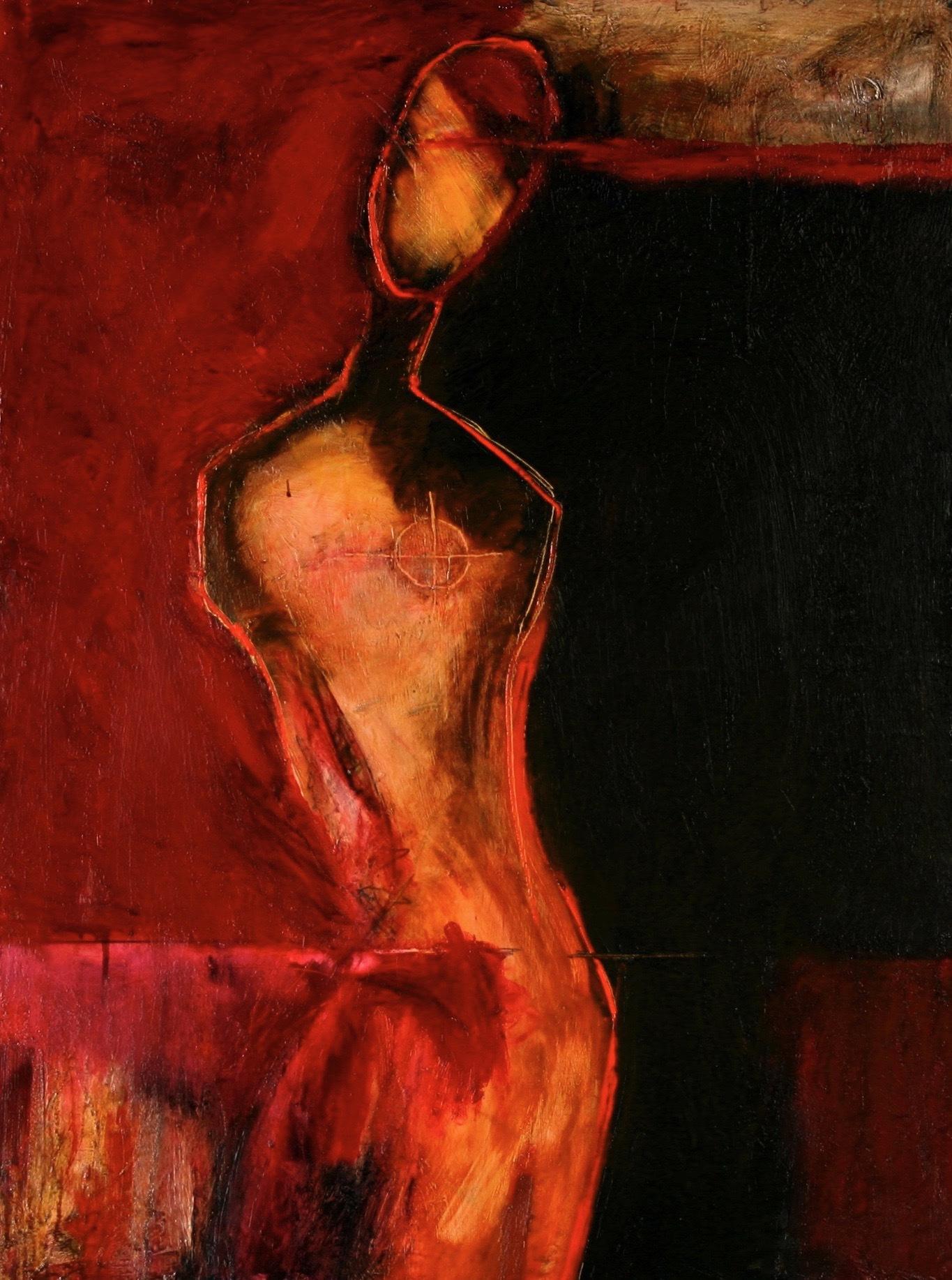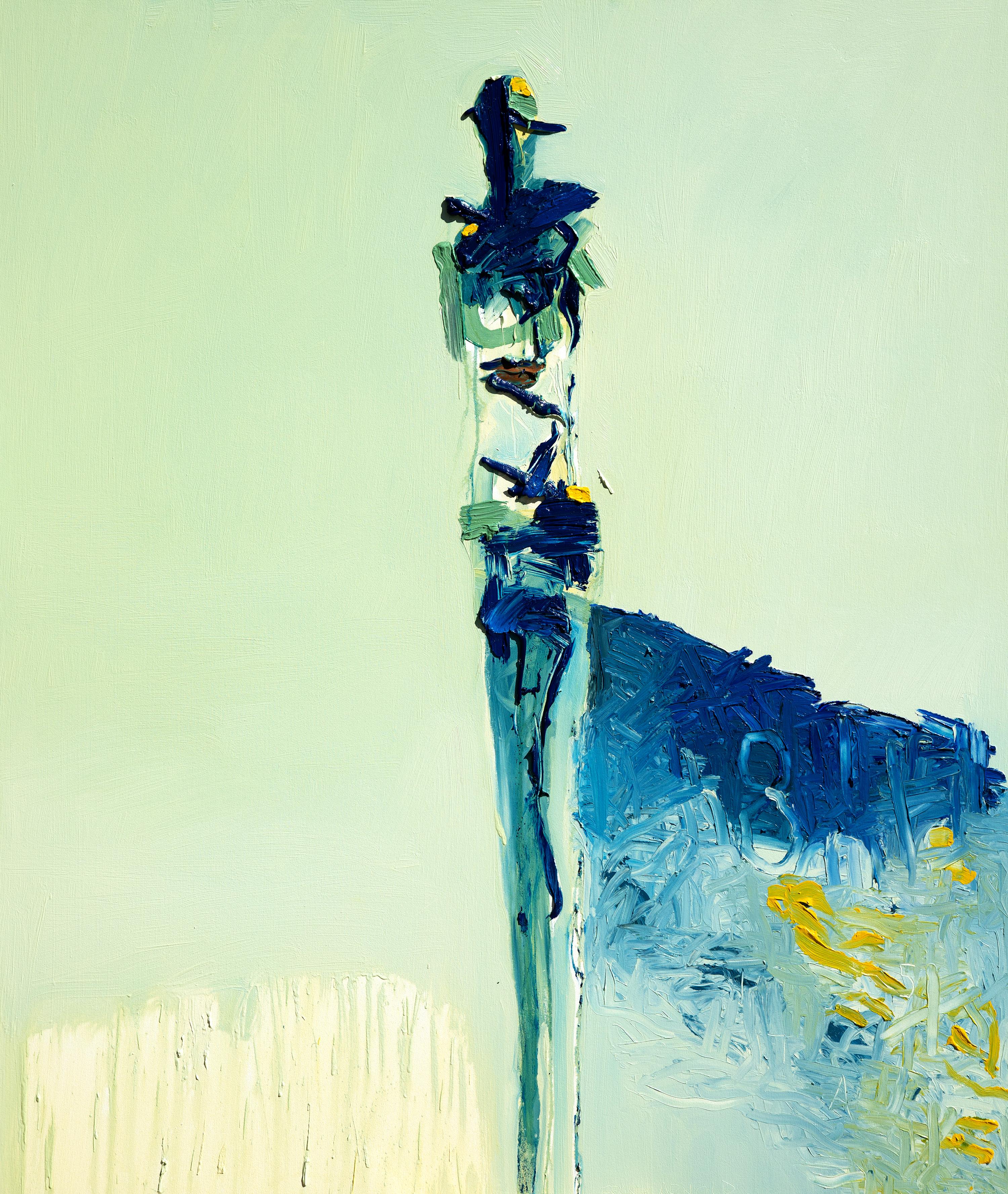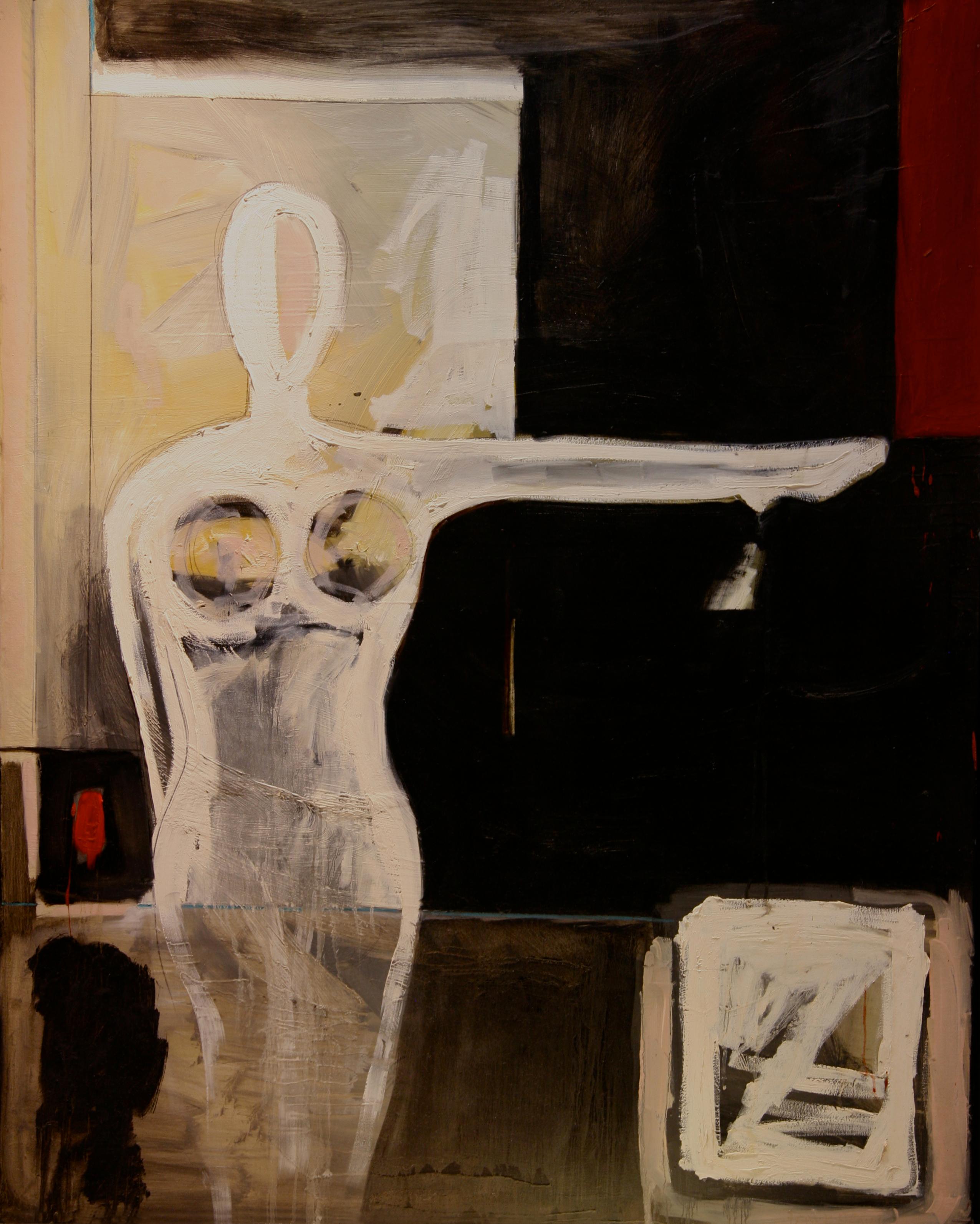Want more images or videos?
Request additional images or videos from the seller
1 of 5
Charles F. Ramsey"Pinpoint Abstraction"c. 1940
c. 1940
About the Item
Jim’s of Lambertville is proud to offer this artwork by:
Charles Frederick Ramsey (1875 - 1951)
Charles Frederick Ramsey is considered as important a leader among the New Hope Modernists, as Lathrop among the New Hope Impressionists. Ramsey, the son of prominent Philadelphia artist, Milne Ramsey, was born in Pont-Aven, France. He began his art studies at the Pennsylvania Museum School of Industrial Art in 1893. From 1896 to 1898, he studied in Paris at the Academie Julian with Laurens, Benjamin-Constant, Ferrier, and Bouguereau. He then enrolled at the Pennsylvania Academy of the Fine Arts with William Merritt Chase, Cecilia Beaux, and Henry McCarter. The Academy awarded him the Cresson Traveling Scholarship in 1904.
In 1903, Ramsey made his first visit to New Hope and was soon spending summers there. He became particularly friendly with artists William Lathrop and Charles Rosen. From 1909 until 1912, he shared studio space in New Hope with Robert Spencer at the old Huffnagle Mansion. At this time, Ramsey was curator of schools for the Pennsylvania Academy. He temporarily moved to Pittsburgh in 1912, where he had been appointed curator at the Carnegie Institute, a position he held until 1916. The same year he accepted a position as director and lecturer at the Minneapolis School of Art. However, this position would be short-lived as he was fired after admitting that he was a socialist and a member of the I.W.W. (Industrial Workers of the World or “Wobblies”). In 1917, he and his family moved to New Hope permanently.
In his early years, Ramsey exhibited at the Pennsylvania Academy of the Fine Arts (1902-03, 1910-12), although he preferred not to participate in competitive salons. He made rare exceptions however, such as the Philadelphia Art Alliance (1940) and the Phillips Mill near New Hope. Ramsey exhibited regularly in New Hope with the Modernists groups, New Group and the Independents.
Ramsey’s early style owed much to the traditional impressionists working in New Hope. However, after the First World War, Ramsey became intrigued by contemporary stylistic innovations and turned increasingly to abstract forms of expression. At this time, he was sharing a studio with Arthur Carles. By 1919, Ramsey had created the first two abstracts painted in New Hope—“The New Hope-Lambertville Bridge” and “The Cloud”. In the 1920s, Ramsey opened New Hope’s first art gallery, the Blue Mask. Ramsey also began to teach at the nearby Solebury School, and organized a summer art school. During this period, Ramsey collaborated with Ethel Wallace, designing batiks and textile wall hangings.
After fellow modernist Lloyd Ney was rejected from entry to the Phillips Mill Annual Exhibition, it became apparent that artists with a more modernist outlook needed a venue where they could exhibit their work and attract customers. Ramsey founded the New Group in 1930, where artists could exhibit artwork of their own choosing in a non-judgmental environment. By 1932 the New Group had reorganized as The Independents.
In the late 1930s, Ramsey became close friends with Charles Evans and Louis Stone. He persuaded them to join him teaching summer classes in non-objective painting. Soon a history-making collaboration began. In 1937, meeting in Evans’ studio at the rear of Cryer’s Hardware Store on Main Street, a decision was made to establish the Cooperative Painting Project. They were intrigued by the cooperative “ad-lib” process by which jazz musicians created music. Believing this to be the quintessential American contribution to music, Ramsey theorized that a similar result might be obtainable with art, a visual “jam session”. The objective was to jointly collaborate in the creation of a painting as well as apply collective criticism during its creation. By creating forward movement by general consent, they believed they could produce a higher level of beauty. By consensus it was decided that the subject matter would be non-objective. Up to eight people would participate and stop when the painting “felt” finished by common agreement. These paintings were signed with the name “RAMSTONEV”. Ramsey continued to paint on his own, creating Modernist works even as the movement lost momentum in New Hope. He passed away in 1951 at the age of seventy-six.
Sources:
New Hope for American Art, James M. Alterman
Charles F. Ramsey Father of New Hope Modernism, Dr. Thomas C. Folk, Allentown, PA: Allentown Art Museum, 2003
New Hope Modernists, Roy Pedersen and Barbara Wolanin, New Hope, PA: New Hope Modernist Project, 1991
- Creator:Charles F. Ramsey (1875 - 1951, American)
- Creation Year:c. 1940
- Dimensions:Height: 49 in (124.46 cm)Width: 39 in (99.06 cm)Depth: 2 in (5.08 cm)
- More Editions & Sizes:Framed Size 50" x 40"Price: $68,750
- Medium:
- Movement & Style:
- Period:
- Condition:
- Gallery Location:Lambertville, NJ
- Reference Number:
About the Seller
5.0
Vetted Seller
These experienced sellers undergo a comprehensive evaluation by our team of in-house experts.
Established in 1997
1stDibs seller since 2014
36 sales on 1stDibs
Typical response time: 6 hours
- ShippingRetrieving quote...Ships From: Lambertville, NJ
- Return PolicyThis item cannot be returned.
More From This SellerView All
- "Flowers and Fruit"By Mercedes MatterLocated in Lambertville, NJJim’s of Lambertville is proud to offer this artwork by: Mercedes Matter (1913 - 2001) Best known as a painter of abstract still life and founder of the New York Studio School, M...Category
20th Century Abstract Abstract Paintings
MaterialsCanvas, Oil
- "Manhattan Night Life"By Vaclav VytlacilLocated in Lambertville, NJJim’s of Lambertville is proud to offer this artwork by: Vaclav Vytlacil (1892-1984) He was born to Czechoslovakian parents in 1892 in New York City. Living in Chicago as a youth, he took classes at the School of the Art Institute of Chicago, returning to New York when he was 20. From 1913 to 1916, he enjoyed a scholarship from the Art Students League, and worked with John C. Johansen (a portraitist whose expressive style resembled that of John Singer Sargent), and Anders Zorn. He accepted a teaching position at the Minneapolis School of Art in 1916, remaining there until 1921. This enabled him to travel to Europe to study Cézanne’s paintings and works of the Old Masters. He traveled to Paris, Prague, Dresden, Berlin, and Munich seeking the works of Titian, Cranach, Rembrandt, Veronese, and Holbein, which gave him new perspective. Vytlacil studied at the Royal Academy of Art in Munich, settling there in 1921. Fellow students were Ernest Thurn and Worth Ryder, who introduced him to famous abstractionist Hans Hofmann. He worked with Hofmann from about 1922 to 1926, as a student and teaching assistant. During the summer of 1928, after returning to the United States, Vytlacil gave lectures at the University of California, Berkeley, on modern European art. Soon thereafter, he became a member of the Art Students League faculty. After one year, he returned to Europe and successfully persuaded Hofmann to teach at the League as well. He spent about six years in Europe, studying the works of Matisse, Picasso, and Dufy. In 1935, he returned to New York and became a co-founder of the American Abstract Artists group in 1936. He later had teaching posts at Queens College in New York; the College of Arts and Crafts in Oakland, California; Black Mountain College in North Carolina; and the Art Students League. His paintings exhibit a clear inclination toward modernism. His still lives and interiors from the 1920s indicate an understanding of the art of Cézanne. In the 1930s, his works displayed two very different kinds of art at the same time. His cityscapes and landscapes combine Cubist-inspired spatial concerns with an expressionistic approach to line and color. Vytlacil also used old wood, metal, cork, and string in constructions, influenced by his friend and former student, Rupert Turnbull. He eventually ceased creating constructions as he considered them too limiting. The spatial challenges of painting were still his preference. During the 1940s and 1950s, his works indicated a sense of spontaneity not felt in his earlier work. He married Elizabeth Foster in Florence, Italy, in 1927 and they lived and worked in Positano, Italy for extended periods of time. Later on, they divided their time between homes in Sparkill, New York and Chilmark, Massachusetts, where Vyt, as he was affectionately called, taught at the Martha's Vineyard Art...Category
1930s Abstract Expressionist Abstract Paintings
MaterialsCanvas, Oil
- "Blue"By Rex AshlockLocated in Lambertville, NJJim’s of Lambertville is proud to offer this artwork by: Rex Ashlock (1918 – 1999) Born in Spokane, Washington in 1918 Rex Ashlock was known for his abstract, figurative expression...Category
1960s Abstract Abstract Paintings
MaterialsCanvas, Oil
- "Pink Dot"By Rex AshlockLocated in Lambertville, NJJim’s of Lambertville is proud to offer this artwork by: Rex Ashlock (1918 – 1999) Born in Spokane, Washington in 1918 Rex Ashlock was known for his abstract, figurative expression...Category
20th Century Abstract Abstract Paintings
MaterialsCanvas, Oil
- "Simorgh"By Solomon EtheLocated in Lambertville, NJJim's of Lambertville is proud to offer this artwork by Solomon Ethe (1924 – 2019) Solomon Ethe was born on June 22, 1924. A native New Yorker, he receiv...Category
1980s Abstract Expressionist Abstract Paintings
MaterialsCanvas, Oil
- "Maroon"By Rex AshlockLocated in Lambertville, NJSigned verso Jim’s of Lambertville is proud to offer this artwork by: Rex Ashlock (1918 – 1999) Born in Spokane, Washington in 1918 Rex Ashlock was known for his abstract, figurat...Category
20th Century Abstract Abstract Paintings
MaterialsCanvas, Oil
You May Also Like
- Last DanceBy Frank ArnoldLocated in Fresno, CALast Dance is an Oil on Canvas painting in soft, light aqua tones with red/brown accents. Frank Arnold is thought by many to be one of the foremost abstract...Category
2010s Abstract Abstract Paintings
MaterialsCanvas, Oil
- My Other SideBy Frank ArnoldLocated in Fresno, CA“My Other Side” is 48”x 36”. This is an earlier piece by Arnold from the estate of a late collector of his work. This piece is predominantly shades of red from light to almost black....Category
Early 2000s Abstract Abstract Paintings
MaterialsCanvas, Oil
- New MoveBy Frank ArnoldLocated in Fresno, CA"New Move 8" Oil on Canvas is a mix of blues and greens with chrome yellow accents. Frank Arnold is thought by many to be one of the foremost abstract figurative painters and sculpto...Category
2010s Abstract Abstract Paintings
MaterialsCanvas, Oil
- Oil on Canvas “Blake’s Wish”By Frank ArnoldLocated in Fresno, CA"Blake’s Wish" is 60” x 48”. Solo female figure Dominant colors are black, white and deep crimson red.. Frank Arnold’s paintings exhibit the highest quality materials for a truly arc...Category
2010s Abstract Abstract Paintings
MaterialsCanvas, Oil
- Industrial ParkLocated in Fresno, CAThis oil on canvas work, "Industrial Park ", presents in charcoal and raw umber tones. A lifelong painter and sculptor, American abstract artist, Jane Whitehurst...Category
2010s Abstract Abstract Paintings
MaterialsCanvas, Oil
- Moving 5By Frank ArnoldLocated in Fresno, CA“Moving 5” is 60”x 48”. The vibrant yellow surface tones of this piece are broken in several places allowing random glimpses of Arnold’s dreamlike underpainting for a multi-dimension...Category
21st Century and Contemporary Abstract Abstract Paintings
MaterialsCanvas, Oil
Recently Viewed
View AllMore Ways To Browse
Seventy Six
James F
New Hope Impressionist
Abstract Painting 1940 France
Modernist Textile Art
Modernist Industrial Painting
M Henry Painting
1930s Industrial Painting
Charles Leader
F F France And Son
Charles Bridge
Lauren C
New Hope Pa
Pa Folk Art
Batik Textile
Abstract Jazz Group
Lauren C Art
Paintings By Robert Phillip





